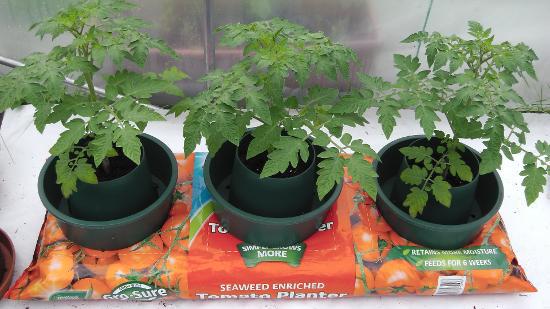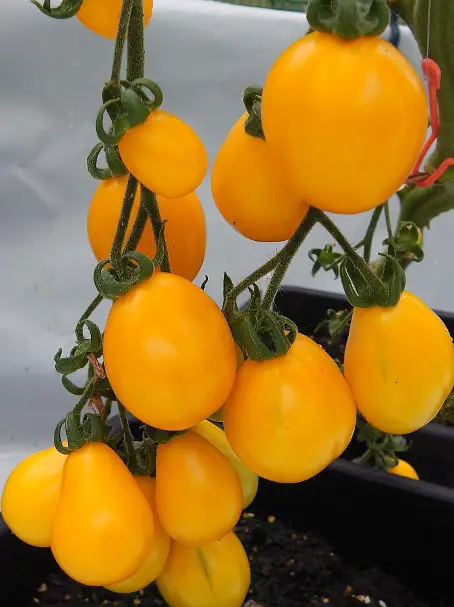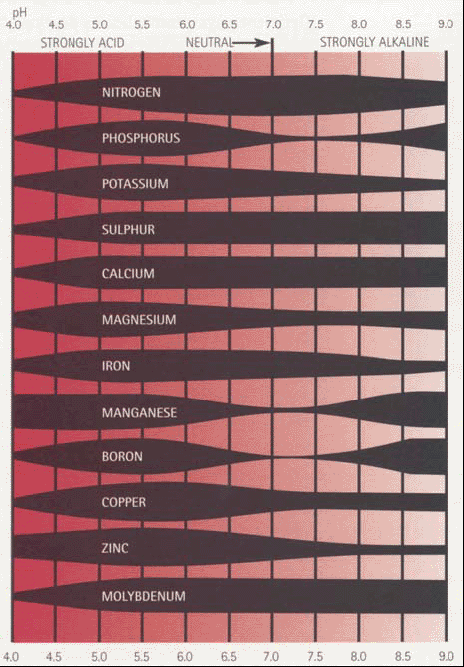In this Newsletter: Hardening off tomato plants, tomato growing Quiz 2, tips on setting up the Quadgrow Planter and Oasesbox self watering planters.
Potting our tomato plants into their final container or grow bag is an exciting time.
The chicks are fleeing the nest, so to speak, and becoming more independent out in the garden and greenhouse!
Hardening off tomato plants
The past few days I’ve been planting Crimson Crush and a few bush varieties into large pots and self watering planters.
Ten minutes on the patio, in the breeze and bright sunshine, and the leaves are wilting and plants looking as if they would much rather be back indoors!
The process of “hardening off” gradually introduces plants to conditions outside, which normally include:
- Lower temperatures at night
- Brighter light levels
- Airflow – breezy or windy conditions
The danger of frost overnight is an issue and so is airflow.
When there is too much airflow around leaves, young plants often wilt because they are unable to control the amount of moisture loss through their leaves – see transpiration.
Putting plants out during the day and taken them in at night, helps them get used to being outdoors and controlling their rate of moisture loss.
When first planted, it’s a good idea, after watering, to stand them in the shade for an hour or two. See how they get on, then put them in the sun and keep an eye on them.
With containers we can move them around the garden, but with grow bags – where we first put them, they stay!
This means that plants to be grown in grow bags need to be fully hardened off, before planting out.

Tomato Quiz 2
Owing to the popularity of the quiz we had a few weeks ago, here’s another one!
[Note: Requires Adobe Flash – works best on PC’s. For Android install the Puffin Browser via Google Play.]The answers are included in the following text.
Tomato plants may be classified into two types:
- Indeterminate, also known as Cordon – fruit grows off one main stem (usually).
Popular varieties include: Alicante, Gardener’s Delight. - Determinate, also known as bush. Varieties include: Red Alert, Tumbler.
Tomato plants are generally fed tomato food after they begin to fruit. If you feed them tomato food before they begin fruiting, the flowering period may last longer than desired.
Tomato blight and potato blight are the same disease – caused by the same fungal spores.
An F1 hybrid is a first generation cross between two other varieties. Sungold is an F1 hybrid and known for its very sweet taste.
Most large varieties are tall, indeterminate plants but one notable large (ish) variety, that is a bush type, is Oregon Spring.
Tomatoes come in many shapes, colours and sizes. Yellow and orange varieties include: Yellow Perfection, Golden Sunrise, Auriga and Sungold.

Nitrogen is the nutrient for leaf growth and best reduced when we want to encourage fruiting.
It is fashionable to eat flowers and all sorts of leaves in salads these days, but remember – tomato leaves are poisonous!
Soil pH is a measure of acid/alkalinity and is important because, if it is within a suitable range, the maximum level of nutrients is available to a plant. Tomato plants grow best in soil that is slightly acid.

Side shoots are removed from tall, indeterminate varieties – no need to remove side shoots from bush varieties.
Click To Take The Quiz
Setting up the Quadgrow & Oasesbox
The Quadgrow
If replacing the capillary matting, cut into shapes like pieces of pizza – wide end in pot.
This ensures that there is plenty of matting inside the root zone to water the plants.

More about the Quadgrow Planter
The Oasesbox
Fill the insert, after planting, to the brim of the top square area.
This ensures that surface roots get plenty of oxygen.

More about the Oasesbox
General tips for both planters
Watering
One thorough watering when tomato plants are first planted, then allow a few days before watering again to encourage root growth.
After several days the reservoirs can be filled to a minimum level – around a litre or two.
At this early stage, plants won’t need a lot of water and it’s important that the soil doesn’t become too saturated.
As plants grow, reservoir levels can be increased.
Feeding
Feed after nutrients in the soil have been used by plants.
Quadgrow: four/five weeks
Oasesbox: three/four weeks
More on feeding in coming weeks.
It is still possible we could have overnight frost in UK…
Plant’s shouldn’t stay outside overnight until all danger of frost has past.
Having said that, I once left a Moneymaker and an Alicante out overnight in a severe frost – the next morning they looked a bit dodgy, but after a bit of pampering, recovered perfectly well!
That’s it for another newsletter – a week closer to our own home-grown tomatoes!
Regards,
Nick

Robert Smith
Hi Nick Good to be reading your very informative news letters again, much appreciated, can I ask you please, when should I start using an air pump/stones, should I wait until the fruits appear.
many thanks
Robert
Nick
Hi Robert,
The best time for adding extra oxygen, via an air pump/stone, is when the tap roots have grown down into the reservoir – around three weeks after planting if using the Quadgrow – or two weeks after planting if using the Oasesbox. I’m please that you enjoy the Newsletters!
Cheers,
Nick
Rhys Jaggar
NW London is being kind this year to tomatoes. The hot sunny spell gave the plants a wonderful photosynthetic boost to turn leaves a healthy green, now temperatures of 16-22C by day, 7-10 by night suggest two weeks of perfect growing temperatures and the ability for many plants to now live outdoors. The gentle breeze is helping to thicken up main stems too.
Interestingly, the heat induced truss formation not only in 10 week old Maskotka/Red Alerts, but also in 6/7 week old Tigerella, Black Russian, Black Cherry and Super Marmande. No flowers yet, but another developmental milestone to tick off the list.
February Maskotkas now in movable final Rhizopots. A good drenching with liquid seaweed at transplantation has established them well. They are currently drying out to grow roots.
This next week is my big week for final pots: 12 plants between Monday and the following Monday. The late sowings will happens at months end or in the first week of June.
Fingers crossed tight, but tomatoes, squash, cucumber and courgette are all looking very good this year.
No leggy plants this year from March sowings either!
Nick
Sounds like you have it all under control – looks like it will be a good season this year!